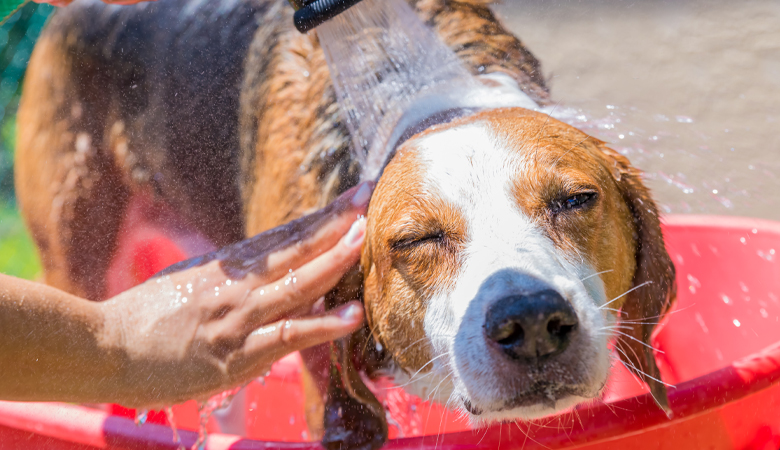Dealing with warmth and heatstroke
Written by |
Heatstroke or hyperthermia can occur in less than 30 minutes. If your pet rests in hot humid weather with little shade and is not given an opportunity to cool down, your pet might struggle to remove the heat from its body. In this article, you can read all about the risks of hot weather for your pet.

Warming up and cooling down
An animal’s body temperature is balanced by its ability to warm itself up and cool itself down. Warming up involves exercise, muscle tremors, burning food and seeking shelter or warmth on cold days. It can cool down by seeking out cool places (shade and watery environments) and by dilating the blood vessels in the ears and legs so that more heat can leave the body.
No sweat glands
Dogs do not have sweat glands. They depend on cooling down by evaporation, i.e. by panting. If the air humidity is very high and the temperature is almost as high as the body temperature (such as in a car), the pet’s attempts to reduce its body temperature may not be sufficient. As a result, the body temperature keeps rising, disrupting all kinds of metabolic processes in the body and overloading the heart and lungs. The animal will pant, drool and become lethargic. Vomiting and diarrhoea may occur. The animal goes into shock.
Cats sweat mainly through the paw pads and not through the skin, which means that they can overheat more quickly. In contrast to dogs, overheating is less common in cats. They often look for a cool place in the shade.
Rabbits also struggle with heat. Consequently, they tolerate the heat during hot summer days poorly. Rabbits can lose their heat by flapping their ears or breathing with their mouths open. At temperatures of 24 degrees Celsius or higher, rabbits are actually too hot. They like to find a cool spot in the shade.
Heatstroke
Heatstroke occurs most frequently when an animal is locked in a vehicle on a hot day. Fast and early recognition of heatstroke and fast and appropriate treatment is then of utmost importance. Risk factors for heatstroke are upper respiratory tract obstruction, vocal cord paralysis and obesity. Dog breeds with a very short nose (Bulldogs etc) are at increased risk of heatstroke. Dogs that have already suffered heatstroke also have a higher risk of recurrence.
Precautions
On hot days, it is important that your pet can lie in an area with shade on a cool surface, such as a cooling mat, and has plenty of water. You can offer your dog extra ways to cool off by putting on an Aqua CoolKeeper Cooling Collar or Aqua CoolKeeper Jacket. Exercise and sports with your dog are best done in the early morning or evening. During the day it’s best to let your dog rest in the shade and drink every half hour. For cats, it is important that there is enough shade in the garden or that your cat can go inside to cool off. If there is little shade, you can put up umbrellas. It is also important that your cat always has fresh drinking water available. You can view all our cooling products here. You can offer rabbits and rodents extra cooling by putting an icepod in their enclosure. During the hot days, also check your rabbit extra for myiasis.
If your dog or cat suffers from heatstroke, the most important thing is to cool it down. By wetting the animal with a sponge with water (especially the head), the animal can cool off again. Heatstroke is an emergency. Contact the vet immediately. As soon as it is safe to do so, you can transport your pet for further treatment.



